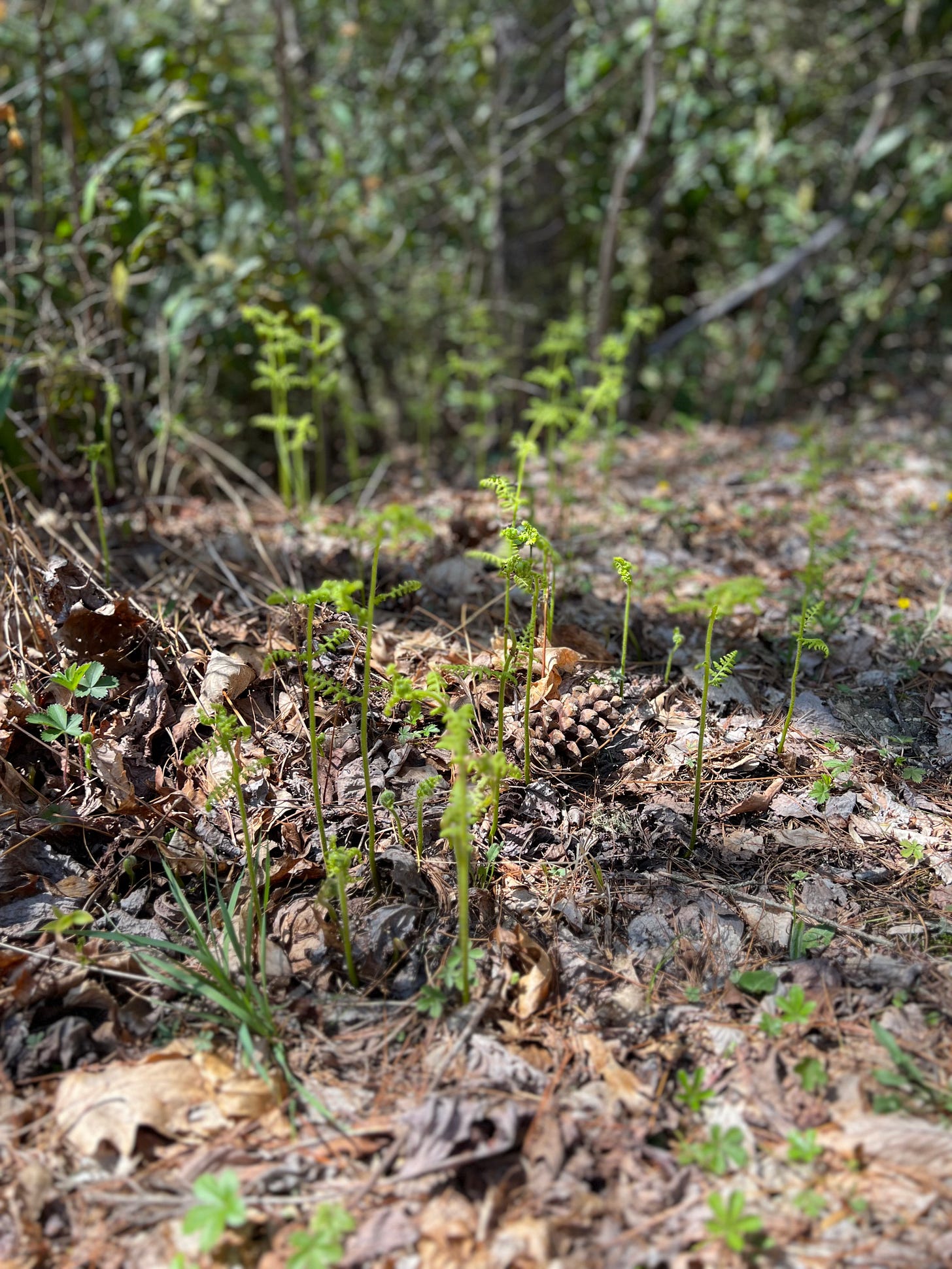
Happy Beltane!
What a perfect day to return to you and this warm, inviting space. As I logged into Substack today, I realized that it has been almost a month since I last wrote to you. How did that happen? The days and weeks seem to fly by recently. I thought that it was about time to return as today marks the halfway point to summer.
I remember celebrating this day with my kids years ago at a farm up in Canterbury, New Hampshire with a real Maypole. Rooted deep in the earth stood a 15 ft. wooden log with pastel ribbons attached of alternating colors. I remember the excitement and busyness as the gathering group of little children and parents were dressed warmly despite the date on the calendar. After much coordination and frustration, the “dance” or movement in the circle weaved its way around the pole. Despite its symbolism and beauty, it was lost on my little boy who couldn’t fathom why he was stuck holding onto a ribbon.
Today, I celebrate this traditional Gaelic festival in a much different way. This festival is steeped in history and has been celebrated for centuries as a way to honor the changing of the seasons and the renewal of life.
Origins of Beltane
The word Beltane comes from the Old Irish words "bel" and "tene", meaning "bright fire". It was traditionally celebrated by the Celts as a time of fertility and abundance. The festival was a celebration of the beginning of the growing season, when the land was coming back to life after the long, dark winter.

Beltane Traditions
There are many traditions associated with Beltane, both ancient and modern. Some of the most common ones include:
Maypole dancing: A tall pole, often decorated with ribbons and flowers, is erected and people dance around it, weaving the ribbons together.
Lighting bonfires: Bonfires were traditionally lit to ward off evil spirits and to provide protection for the community.
Feasting: Beltane was a time of abundance, and feasting was an important part of the celebration. Traditional foods may have included oatcakes, cheese, and mead.
Flower crowns: Wearing flower crowns or garlands was a common practice during Beltane, symbolizing the fertility and renewal of the season.
Today, Beltane is still celebrated by many people around the world, although the traditions have evolved or adapted to suit modern times. However you choose to mark the day, Beltane is a time to celebrate the coming of summer and to honor the cycles of nature.
Personally, I use it as a time to spend time outside as much as possible. I love exploring my property and woods to spot what has emerged.
I walk every morning down my long driveway to feel the warm sunshine on my face and body. I stand at the bottom, close my eyes and breathe.
I normally spend time in my garden beds, planting seeds and plants. This year, I am way behind so I am clearing and preparing my beds instead.
Unfortunately, the weather is freezing today, so I am planning on celebrating all week instead of putting pressure on myself to cram it all into one day.
I am connecting to the goddess of abundance, Lakshmi in my morning sadhana practice through chanting a mantra on my mala beads. I wrote a blog post about Lakshmi over on my website if you want to learn more about her. Lashshmi reminds me to connect to all the beauty in my life right now and to show gratitude for it.
Beltane is a beautiful and meaningful festival that celebrates the renewal of life and the changing of the seasons. Whether you choose to celebrate or not, it’s a wonderful time to honor the earth and to connect with the cycles of nature.
Is this something that you celebrate in your own lives? Are there other ways that you connect to the abundance in your lives?
Let me know…I’m curious.
Thanks for reading!
See you soon, Blythe



